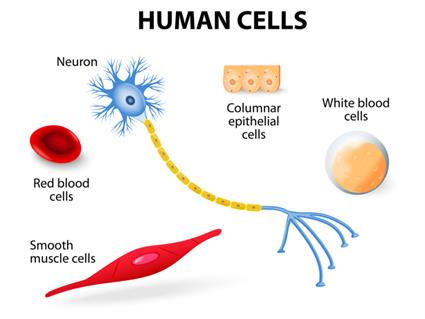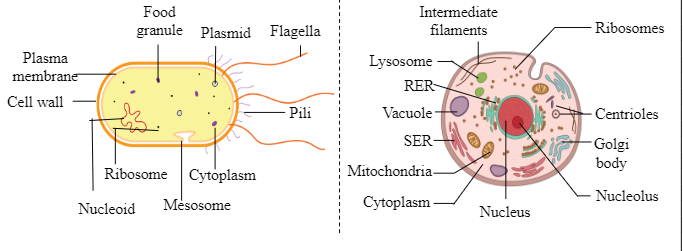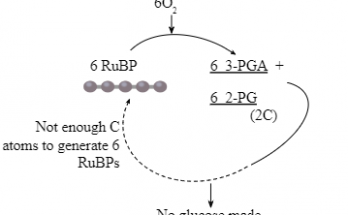Unicellular and Multicellular Organisms
Unicellular organisms are made up of a single cell, while multicellular organisms are made up of multiple cells.Unicellular organisms are small, simple in structure, and perform all life functions within a single cell. Unicellular organisms reproduce by Asexual Reproduction. Example- bacteria, protozoa, and some algae.
Multicellular organisms are made up of many cells that work together to perform different functions. Multicellular organisms are larger and more complex in structure than unicellular organisms. In Multicellular organisms cells are specialized and organized into tissues, organs, and organ systems to perform specific functions. This division of labor in multicellular organisms allows them to perform complex tasks, respond to environmental changes and adapt, and ultimately survive and reproduce. Multicellular reproduces sexually as well as asexually .Examples- Animals, plants and fungi etc .
Also Check – 13 Important Similarities between Unicellular and Multicellular organisms
15 Important Differences between Unicellular and Multicellular organisms
| Factors | Unicellular Organisms | Multicellular Organisms |
|---|---|---|
| Definition | Unicellular organisms are organisms that consist of a single cell. | Multicellular organisms are organisms that consist of multiple cells. |
| Size | Unicellular organisms have smaller cells and have a simpler structure. In unicellular organisms, all of the necessary functions for survival and reproduction are carried out by a single cell. Smaller size also allows for more efficient exchange of materials and energy. | Multicellular organisms have larger cells than unicellular organisms . The larger size of cells in multicellular organisms allows for more efficient and effective performance of the organism’s functions. |
| Visibility | Unicellular organisms under a microscope. | Multicellular organisms are made up of multiple cells and are visible to the naked eye. |
| Origin | Unicellular organisms have an impression to have originated from simple prokaryotic cells through a process of evolution. | Multicellular organisms have an impression to have originated from the fusion of multiple unicellular organisms through a process of symbiogenesis. |
| Number of cell | 1 cell | More than 1 cell |
| Cellular Organization | Unicellular organisms have a simple cellular organization and carry out all necessary functions within that single cell. | Multicellular organisms have a complex cellular organization, with different types of cells that specialize in different functions. |
| Cell Differentiation and tissue forming | Unicellular organisms do not have specialized cells or tissues as they only have one cell. | Multicellular organisms have specialized cells and tissues that perform specific functions. |
| Reproduction | Unicellular organisms reproduce through a process of Cell Division by Binary fission. | Multicellular organisms can reproduce by Sexual Reproduction and Asexual Reproduction |
| Nitrogen fixing Ability | Few Unicellular organisms, such as bacteria, have the ability to fix nitrogen through a process of nitrogen fixation.. | Multicellular organisms do not have the ability to fix nitrogen. Multicellular organisms depend on other organisms to provide them with this essential nutrient. |
| Organization of Genetic Material | The genetic material of Unicellular Organism is organized in a single nucleus or within the cytoplasm of the cell. | The genetic material of Multicellular Organisms is typically organized in the nucleus of the cell, and is distributed among the different cells of the Organism. |
| Cell junction | Unicellular organisms cells are independent and don’t need to communicate with one another | In Multicellular organisms cell junctions play a crucial role in allowing cells to work together and perform complex functions. |
| Lifespan | Unicellular organisms have a short lifespan but they reproduce quickly. | Multicellular organisms have longer lifespan and they reproduce slowly |
| Membrane bound Organelles | Unicellular organisms membrane-bound organelles. | Multicellular organisms have membrane-bound organelles such as mitochondria, endoplasmic reticulum, and Golgi apparatus, that help to organize and compartmentalize cellular functions |
| Organ or Organ System | Unicellular Organisms do not have specialized organs, as all functions are performed by the single cell. | Multicellular organisms have specialized cells that perform specific functions, organized into tissues and organs. |
| Differentiation in cellular process | Unicellular organisms function as a single unit. They have little to no differentiation in their cellular processes. | Multicellular organisms have multiple cells, have specialized functions and are organized into different tissues and organs. They have a high degree of differentiation in their cellular processes. |
| Diagram |  |  |
Also Check – What is the Utility of Tissues in Multicellular Organisms?
Also Check – How are the Modes for reproduction different in Unicellular and Multicellular Organisms?


3 Comments on “15 Important Differences between Unicellular and Multicellular organisms”